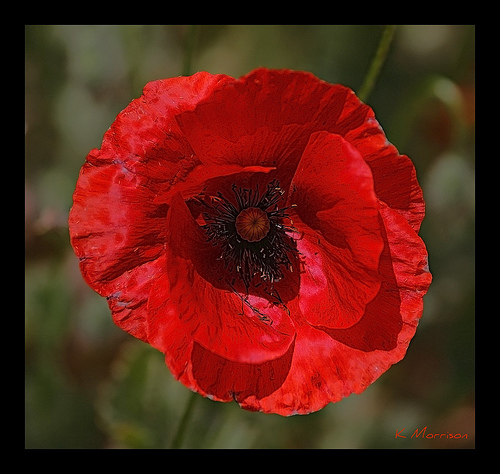FWP:
SETS
ROAD: {10,12}
ZARRAH: {15,12}
Nazm explains the wordplay of dāġh and fatīlah . You might think that
in a gorgeous, voluptuous garden the path through it would be 'useless' in
contributing to the visual effects. But far from it. The long, narrow path can serve as a certain kind of
rolled-up bandage used for deep wounds and called metaphorically a 'wick'.
And since the tulip's wound is a flaming one contained inside
a deep cup, it resembles an oil lamp, and the path can act as a a 'wick' for
it.
Thus in one sense, the fatīlah as a wick makes possible the flame of the tulip; in another sense, the fatīlah as a bandage soothes the fiery wound of the tulip. It thus plays two contradictory roles at once, both of them crucial. And the path itself, the particular word jādah , seems to be a part of Ghalib's regular tool kit of highly abstract images; for other examples, see {9,4}.
The word yāñ , 'here', may mean 'in the garden', thus suggesting what an unusually complex microcosm the garden really is. Or it may mean 'in this world', thus suggesting that the world is full of signs that have meaning for the mystically perceptive (consider {13,1}). What is here a single grain of dirt, żarrah , is normally conceived of by Ghalib as more like a sand-grain, and in that role too it is is full of mystical possibilities (see {16,4}).
We don't get to know any of this until the second
line, of course. The first is a general statement; the second provides
an instance or proof
of it.
ABOUT THE lālah AND ITS dāġh : By convention the lālah has a 'wound' or 'scar' in its heart, indicated by its dark, scorched-looking center; thus its heart resembles that of the lover, which has at its center the black suvaidā (on this see {3,2}), and is flaming with passion, and finally burns itself out (and which also melts into bright red blood the color of the flowers). In the real world, there are lots of species of tulips; they have all kinds of different-looking centers. Moreover, in India the lālah can also become a red poppy (see the definition above); for more on such stylization, see {60,8}. The important thing is that in the ghazal world, the lālah is always inwardly dark or blackened, to show that the flower's heart is scorched or burnt-out, with a 'wound/scar' of (mystical?) suffering. Other verses that invokes the tulip's 'wound' or 'brand': {146,4x}; {155,1}; {230,1}.
Different kinds of dāġh formations: a tulip, and a red poppy:


Nazm:
If we take dāġh to mean 'wound', then fatīlah is that rolled-up bandage that they put in a wound, and if we take it to mean [a burning] 'lamp', then fatīlah [as 'wick'] is the cause of its radiance. In the first case, the lush growth of greenery has caused the path to grow so thin that it's become like the vein of the tulip. And the 'wound' is the special feature of the tulip because it would prove the claim of excess against the numerousness of the colorful roses and the intensity of the greenness of the greenery. And in the second case, it means that the path has the same affinity with a tulip that a wick does with a flame. (31-32)
== Nazm page 31; Nazm page 32